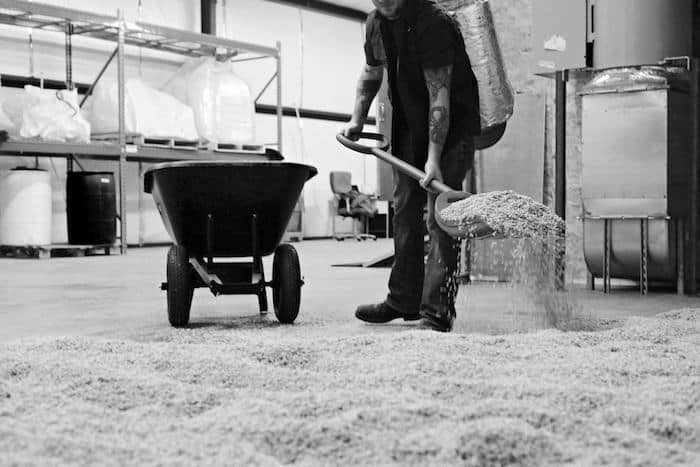The same impulse that drives many farm distillers to grow and distill their own grain is pushing them towards bringing malting back under the distillery roof, too. While it’s easy to buy high-quality malt from suppliers today, many small-scale operations are exploring floor malting, a traditional process still used by a handful of Scottish distilleries that hearkens back to the early days of commercial brewing and distilling. Notable examples include:
- Coppersea Distilling in Ulster County, New York
- Copper Fox Distillery in Sperryville, Virginia
- Corsair in Nashville, Tennessee
- Leopold Bros. in Denver, Colorado
- Rogue Distilling in Newport, Oregon
Much like distilling, the principles behind floor malting are simple, but its skillful execution is a ton of work. First, grains are thoroughly soaked, typically undergoing successive steepings to saturate the grains without depriving them of oxygen. Without air, the seeds will die.

Then, they’re laid out in a relatively thin, even grain bed in a cool, clean place. Over the next several days, workers (strong ones!) turn and rake the grain to generate airflow and keep rootlets and acrospires (sprouts) from matting.
At just the right stage, the grains are lifted from the floor and transferred to a kiln, where they’re dried to halt germination, and then toasted (or roasted, as the case may be) to develop new flavors through Maillard reactions.
But ultimately, most distillers are primarily concerned with a prospective malt’s diastatic power, its ability to convert other starches to sugar. Stronger diastatic power ultimately means a better yield from the still – a critical consideration for long-term profitability.
Floor-malted grain tends to be more expensive than commercially malted barley, but what it loses in cost it makes up for, some say, in flavor. And that’s something whiskey fanatics will do (almost) anything to boost – even shoveling thousands of pounds of wet grain by hand.



